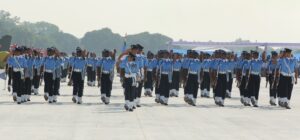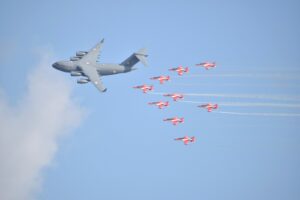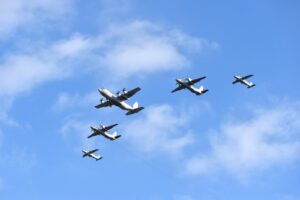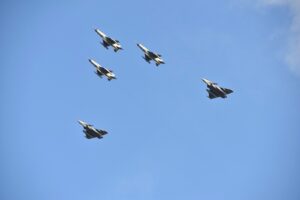War endurance refers to the ability of a nation, military, or individuals to withstand and persist through the challenges, hardships, and demands of war over an extended period. War endurance is a critical factor in determining the outcome of conflicts. Historically, nations and entities with higher levels of endurance have often prevailed in prolonged conflicts, demonstrating the importance of preparation, resilience, and adaptability in times of war. War endurance is influenced by a complex interplay of various factors including physical and psychological endurance, resource availability and logistical endurance. A successful balance and effective management of these factors are crucial for a nation or entity to endure a war and sustain its efforts over an extended period.
War Endurance: Military Factors. Some of the military factors that have a direct bearing on the war endurance are as follows:-
- Military Strength and Capability. A well-equipped and well-trained military with adequate manpower and technological advancements significantly contributes to war endurance.
- Logistical Efficiency. Efficient supply lines and logistics are critical for maintaining the military’s operations, ensuring a continuous flow of resources and support to the front lines.
- Resilience and Determination: The mental resilience, determination, and psychological preparedness of both the military and civilian population to face the hardships and horrors of war are fundamental for endurance.
- Adaptability and Flexibility. The ability to adapt to changing circumstances and strategies during a prolonged conflict is essential for maintaining a sustainable effort.
- Alliance and Support. The presence of strong alliances and international support can provide a morale boost, military assistance, and economic aid, enhancing a nation’s ability to endure a war.
- Geographic Terrain. The geographical landscape can influence war endurance, as difficult terrains can make military operations more challenging and impact resource accessibility.
- Technological Advancements. Utilizing advanced technologies in warfare can improve military efficiency, intelligence gathering, and strategic planning, potentially enhancing war endurance.
Russia-Ukraine War: Aspects Related to War Endurance
Russia – Ukraine war is well into the second year, with no end in sight. It began as a special military operation and became a long-drawn affair. The war has brought into focus numerous issues related to the duration of wars and war endurance.
- Possibly, the Russian intention was to carry out a swift military operation and make a regime change in Ukraine. It did not succeed due to the interplay of several dynamics. The intention may be for short and swift conflict, but one can’t really control it.
- One of the officially stated Russian objectives was the “demilitarisation of Ukraine”. Russians attacked Ukrainian military bases and selective defence industry, considerably reducing the Ukrainian combat potential. The war-waging enablers need to be protected.
- After the high intensity of the operations initially, the tempo of the war has been wavering.
- The use or non-use of full military power especially airpower by Russia is intriguing to the strategic community and military analysts. The calibrated approach to preserve military assets is essential in long-duration wars.
- Ukraine does not have the capability to endure such a long war. Outside support from the USA and other European states, is enabling it to sustain the conflict.
- Harsh sanctions have been imposed on Russia. The sanctions do not deter aggression but their effect has to be catered for in the planning.
- No contact warfare philosophy is being used by both sides. The LR vectors and drones are being used by Ukraine for retaliatory strikes and by Russians for punitive reasons. Even in the Armenia and Azerbaijan conflict the drones played a decisive role.
Coming Up: Air War Endurance.
Bottom Line
War endurance is a combination of duration and tempo of operations.
Question
Should Indian Military prepare for a short and swift war or a long drawn conflict?
Suggestions and value additions are most welcome
For regular updates, please register here
References and credits
To all the online sites and channels.
Disclaimer:
Information and data included in the blog are for educational & non-commercial purposes only and have been carefully adapted, excerpted, or edited from sources deemed reliable and accurate. All copyrighted material belongs to respective owners and is provided only for purposes of wider dissemination.









